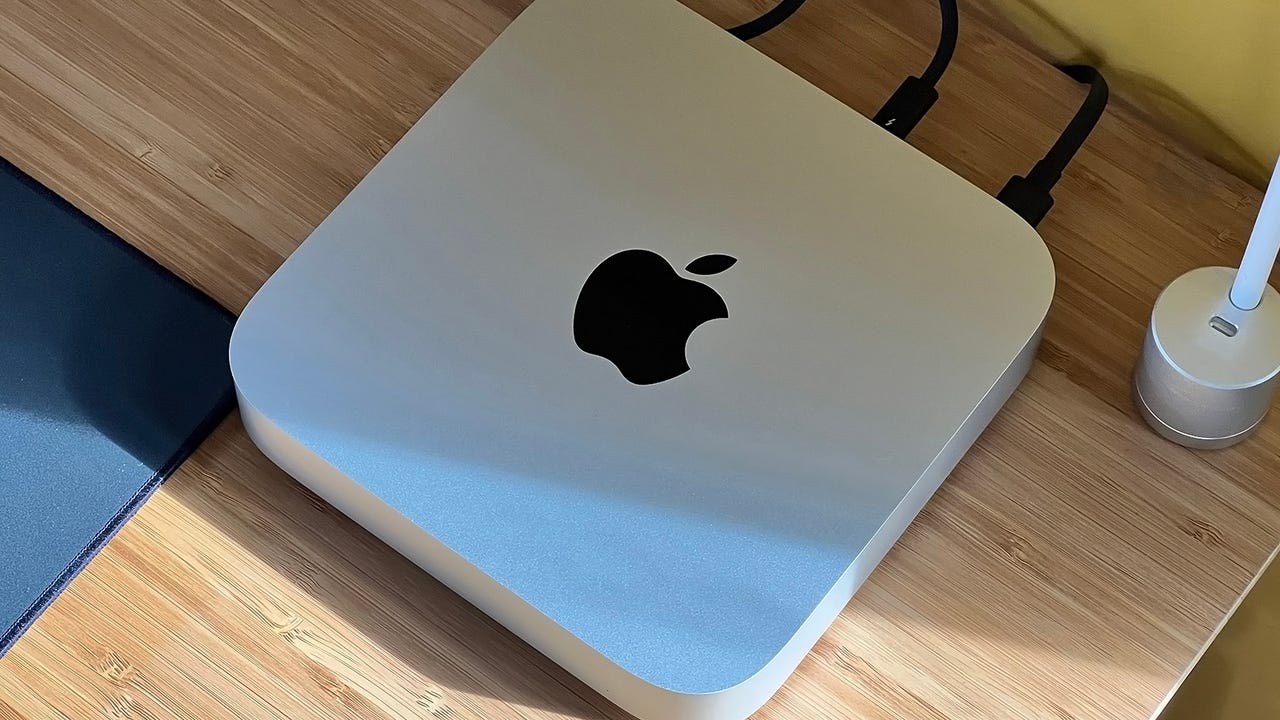
































In the bustling landscape of 2024's technology market, where high-end laptops and desktops often grab the media spotlight, finding a desktop computer that combines affordability with dependable performance remains a critical yet daunting challenge for many. This reality hits home for a diverse group of users -- be they job seekers, students, seniors on social security, or, as in my friend's case, individuals living on a limited disability income.
Also: I revived three ancient computers with ChromeOS Flex, and you can too
Tasked with finding a replacement for his outdated 2016 desktop within a strict budget of$1,000 -- encompassing the computer, monitor, and essential upgrades -- we embarked on an eye-opening journey through the intricate and sometimes ruthless world of modern PC shopping.
Our mission was specific: a system with no less than 16GB of RAM (32GB would be ideal) and an i7 processor powerful enough for a demanding workload. For my budget-conscious friend, this was more than finding the best value for money; it was about securing a future-proof system that wouldn't become quickly obsolete in a rapidly evolving tech landscape. Our budget had to cover the PC, a monitor, and potential additions like an entry-level GPU and extra RAM.
Also: Lenovo made a Mac Studio for Windows users, and it might even be better
We quickly faced a harsh reality: the market's scarcity of mid-range PCs that balance performance and affordability. After scouring Amazon, the usual big box and warehouse store suspects, and direct manufacturer online sales websites, many of the new systems within our budget were disappointingly underpowered, hardly an upgrade. Meanwhile, while the price was attractive and meeting our performance criteria, refurbished models were often several years old, posing significant concerns about their longevity and future compatibility, particularly with Windows updates.
During our search, we also considered the Apple ecosystem. Theentry-level Mac Mini M2 , known for its efficiency and power, emerged as a surprisingly affordable option. Although typically featuring less onboard RAM than their PC counterparts, their unified memory architecture offers significant performance advantages, especially over mid-range PCs with i3, i5, and Ryzen 5 processors.
Review: Apple Mac Mini (2023): Faster, cheaper, better
The switch to a different operating system can be daunting, and for many, there are cultural biases against Macs, often seen as overpriced status symbols. However, for users open to a change, the Mac Mini M2 could be a compelling choice, particularly with the increasing shift towards web-based and mobile applications.
Our journey also revealed HP's strategic positioning in the mid-range PC market. By leveraging the Ryzen 5 processor, HP has effectively cornered this segment. These processors, much more affordable than their Intel equivalents, allow HP to offer systems that strike a rare balance between cost and performance, a boon for mid-range consumers.
HP's dominance in the mid-range market was evident, withseveral Ryzen 5 systems at attractive price points. Lenovo was also in the mix, offeringcompact, budget-friendly models . However, these smaller units often required GPU upgrades, and finding compatible graphics cards for these compact models proved to be a significant challenge, adding to the overall cost and complexity.
Also: Windows 11: Do these six things right away after you finish setup
At the price point he wanted, Asus also had a few desktop systems primarily geared towardall-in-ones with lower memory configurations . But Asus also have compelling, inexpensive laptops, such as its sub-$700 Vivobook with a Ryzen 7 processor and a 16" screen. Although the latter was a strong contender and could have been paired with a monitor and a keyboard, my friend preferred the simplicity of a desktop system with a large monitor and a full-size keyboard.
Ultimately, we decided on theHP Victus 15L Gaming Desktop PC . Priced at$659, it boasted an AMD Ryzen 5 5600G, AMD RX6400, 32GB RAM, and a 1TB SSD -- meeting all our specifications and also leaving us enough of a budget for a 24-inch monitor. Ironically, a gaming PC, initially not our primary focus, offered the best value, highlighting the skewed priorities of the current market and the unexpected places one might find a suitable solution.
In our quest, we flirted with assembling a Ryzen 5 PC from scratch, picking out a mainboard, CPU, RAM, case, and power supply. But here's the catch: the cost of building a custom system was comparable to pre-built options, nullifying a DIY build's perceived advantage. This realization underscored custom PC assembly's hidden costs and complexities, particularly under tight budget constraints.
This journey mirrors a broader dilemma many face: a market that often overlooks the needs of mid-range buyers. My advice? Venture beyond traditional categories. Overcoming biases and exploring different ecosystems, such as Macs or unconventional PC types, can lead to surprising and satisfying solutions. In today's rapidly evolving tech environment, prioritizing future-proofing is crucial.
Also: Windows and Mac software: My 11 essential apps and services
Moreover, this search for an appropriate PC for my friend highlighted the challenges within the Wintel ecosystem. It underscored the emerging competition from ARM-based SoCs, as seen in systems like theMac Mini M2 and various Chromebooks. These alternatives are gaining traction, offering competitive pricing and features that align well with the increasing reliance on web and mobile-based applications. This shift suggests a significant paradigm change in home computing, where traditional Windows-based systems are no longer the only viable option for users seeking power and affordability.
Our foray into the 2024 PC market was more than just a quest for hardware; it was a revelation about the changing landscape of home computing. As we move forward, the industry must adapt, offering more versatile and affordable solutions to bridge the gap in the mid-range market. Until then, consumers must navigate this evolving terrain with an open mind and a readiness to embrace new technologies and ecosystems.
 Tags quentes :
Tecnologia
Computação
Pcs
Tags quentes :
Tecnologia
Computação
Pcs